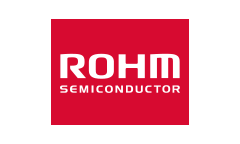Linear Regulator Series Linear Regulator Specifications
A linear regulator data sheet includes a specifications table that lists output voltage values and precision. Besides, very important information such as maximum ratings, operating conditions and characteristic graphs are described in the table.
The absolute maximum rating is defined as a value that must not be exceeded even for a moment. Although some items are defined by a time component, such as short-circuit time, it is basically prohibited to exceed the absolute maximum rating in every case. And, for obvious reasons, a tolerance like ±10% is never assigned to values. We sometimes receive questions like: What will happen if a value exceeds the absolute maximum rating? How much margin does the system have? (These questions may be just a matter of interest.) However, they miss the point when it comes to considering the purpose of absolute maximum rating. You should make efforts so that the operating maximum value will not exceed the maximum rating or try to use a linear regulator model having the maximum rating that allows the operating maximum value.
It is important to identify the conditions that guarantee the specification values, for example, applied voltage and temperature. Actual use conditions do not always accord with specification-stipulated conditions. As a typical example, if a condition of Ta=25°C is given, its guaranteed value persistently is a value at Ta=25°C. However, in actual use, a constant condition at Ta=25°C would be possible only in a thermostatic bath. Therefore, in examining the specification value, it is necessary to verify whether the value applies to a single specific condition or a range of conditions, for example, a range of operating temperatures, and to confirm the value in a condition close to the actual use condition and operating condition of the designed equipment. To do this, a supplemental reference graph is often useful.
Lastly, the specification values include descriptions of any one or all of the minimum values (Min), maximum values (Max) and typical values (Typ). Among these, only the minimum value and maximum value are guaranteed. The typical value (Typ) is “an approximate value” based on characteristic distributions and statistical techniques. Basically, every product is designed based on the specification values. Then, which value should we use to design products? Although general designs might be based on typical values in principle, the design should be based on the values that pose the worst conditions. This selection depends on the know-how and experience of designers themselves.
This paper explains typical items in linear regulator specifications. However, other specification items may not be ignored. Reading a data sheet carefully is very important for designers, not only for linear regulators but also for other equipment.
|
|
|
|
Application note & Design Guide |
|
|
|
|
Please see the document for details |
|
|
|
|
|
|
|
|
|
|
|
English Chinese Chinese and English Japanese |
|
|
Dec.2015 |
|
|
Rev. A |
|
|
No.15020EAY18 |
|
|
633 KB |
- +1 Like
- Add to Favorites
Recommend
- Silicon Carbide cooperation between SEMIKRON and ROHM Semiconductor: ROHM’s SiC technology empowers SEMIKRON’s eMPack® for the next generation of electric vehicles
- Notice of Integration of ROHM Three Sales Companies in China
- Continental acknowledges ROHM Semiconductor with the “Supplier of the Year 2022 Award“
- ROHM Online Distributor China | Sekorm
- ROHM‘s Nano Energy™ and LAPIS Technology‘s Charge Control IC Help Maxell Energy Harvesting-compatible Evaluation Kit
- ROHM SiC MOSFETs Solve Design Challenges for Leading Solar Energy Company Midnite Solar
- Ultra-Low IQ PMIC from ROHM Selected to Power NXP iMX8M Nano for High Performance Embedded Artists Industrial Control Board
- ROHM’s Product Longevity Program Enables Worry-free Adoption of ROHM Products
All reproduced articles on this site are for the purpose of conveying more information and clearly indicate the source. If media or individuals who do not want to be reproduced can contact us, which will be deleted.















































































































































































































































































































































































































































































































































































































































































































































































































































